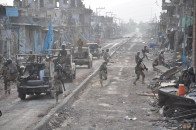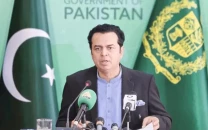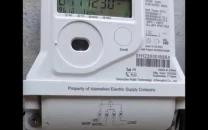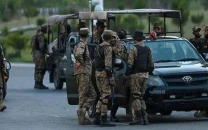Water, sanitation a dream for public school students
Despite a billion-rupee budget, schools across the province have no clean bathrooms or drinking water available.

For students spending nearly six to seven hours away from home each day, the school premises become almost like a second home. Yet for the hapless students stuck in public schools, the school is a very strange home, one with no running or drinking water arrangements at all.
According to a survey conducted by The Express Tribune across areas like Shah Alam Market, Bhata Lahori, Shadbagh, Darwagahwala, Bedian and Raiwind, among other posh areas to assess the cleanliness and drinking water arrangements, poor sanitation and a lack of drinking water came out to be one of the biggest administrative challenges facing government schools across Punjab. While filters were installed in some schools for water supply, clean water remained unavailable due to outdated filters while the toilets lacked proper cleaning, presenting a host of problems for the students.
While talking to the correspondent, a group of students reported cleaning bathrooms themselves while fetching water in their bottles from filters installed in tubewells. The children claimed that they were clueless about the funds allocated by the government for the maintenance of their schools. "Only fans are installed in our schools which are used during the summers. Due to the deplorable condition of the toilets, we either have to clean them ourselves or avoid using them altogether," lamented the students.
Surprisingly, Punjab has approximately 48,580 schools, catering to 15 million students from primary to higher education; however, even in metropolitan cities like Lahore, with a total of 1,170 schools, sanitation is neglected. In fact, even the schools located in affluent areas like Model Town, Garden Town, and Johar Town, lacked proper sanitation.
According to Muhammad Azhar, President of the English Teachers Association Punjab, despite repeated requests for clean water, toilet maintenance, and staff provision, budget constraints hindered the improvement of sanitation and water facilities at public schools. "Teachers in major cities replace filters and maintain cleanliness through their own small means. They also install private dustbins to ensure cleanliness.
The non-salary budgets primarily cover electricity bills, due to which nothing is left for the replacement of filters in water coolers or for the cleanliness of washrooms. During the COVID-19 pandemic, the government instructed schools to provide soap and clean water for handwashing. Unfortunately, this initiative was not sustained after the pandemic subsided," regretted Azhar who went on to add that schools also faced furniture shortages, and reports of missing facilities were prepared but remained unimplemented.
Iftikhar Mubarak, Head of Search for Justice implored that basic facilities should be provided to school children to promote education but unfortunately there is no infrastructure to facilitate the provision of education in schools. "While some provisions would be available in the cities, the state of schools in the rural areas is much worse. Education should be prioritized however, till date this sector has not been given any attention. Schools proudly put up boards which endorse the popular adage, "cleanliness is half faith," however, the implementation is zero. Despite the consistent reminders, the government has failed to improve the state of cleanliness at toilets in schools, which is regrettable," said Mubarak.
On the other hand, a spokesperson for the School Education Department claimed that committees have been formed in every district to address the issues in schools. "The Education Minister Rana Sikandar Hayat Khan aims to install filters, provide clean water, furniture and teachers.



















COMMENTS
Comments are moderated and generally will be posted if they are on-topic and not abusive.
For more information, please see our Comments FAQ